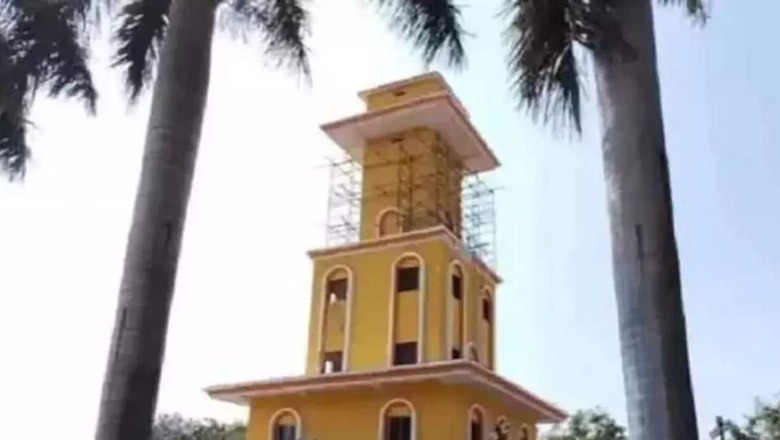
views
Prime Minister Narendra Modi will unveil the ‘Vikramaditya Vedic Clock’, which will calculate time based on the Indian ‘Panchang’ (time calculation system), in Madhya Pradesh’s Ujjain today.
The Prime Minister will be inaugurating a series of developmental projects in Ujjain today via a video link.
According to the government’s press release about the clock, “The Indian system of time calculation is the oldest, subtle, pure, error-free, authentic and reliable method in the world. This most reliable system is being re-established in the form of Vikramaditya Vedic Clock in Ujjain.
“Throughout the world, the time prescribed and transmitted from Ujjayini (Ujjain) has been followed. The shortest fraction of time is included in Indian time calculations based on the Indian astronomical theory and the motions of planetary constellations,” it added.
About the Vedic Clock
The clock is mounted on an 85-foot tower within Jantar Mantar in Ujjain, adjacent to the Government Jiwaji Observatory.
Sri Ram Tiwari, Director of Maharaja Vikramaditya Research Institute, stated, as quoted by The Times of India, “It will be the world’s first clock in which Indian time calculation will be displayed. The Vedic Clock installed in Ujjain as the city has been considered the centre of time calculation. The Tropic of Cancer passes through Ujjain”.
How will this clock work?
This clock will calculate time based on Vedic Hindu Panchang, planetary positions, Muhurat, astrological calculations, solar eclipse, lunar eclipse, among other things, and also indicate the Indian Standard Time (IST) and Greenwich Mean Time (GMT).
Time calculation is based on the duration from one sunrise to the next.
Shishir Gupta, a member of the Vedic clock development team, as quoted by The Times of India, explained, how the clock functions. “The clock will calculate time from one sunrise to another. The time period between the two sunrises will be divided into 30 parts, with each hour consisting of 48 minutes. The reading will start from 0:00 with the sunrise functions for 30 hours (an hour of 48 minutes).
Why Ujjain?
According to Hindu astronomical belief, Ujjain was once considered India’s central meridian, and the city determined the country’s time zones and time difference. It is also the basis of time in Hindu calendar.
Ujjain is located at the precise point of interaction with zero meridian and Tropic of Cancer. It is also located at India’s oldest observatory built by Sawai Jai Singh II of Jaipur in the early 18th century.
The 1884 convention on meridians accepted the longitude passing through Greenwich as the zero meridian or the Prime Meridian. IST, four hours ahead of GMT, is calculated in Mirzapur in Uttar Pradesh, which lies 82°30’ East longitude, as reported in Hindustan Times.



















Comments
0 comment